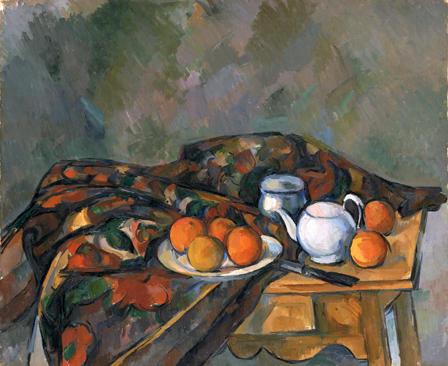Facts About Still Life with Teapot
"Still Life with Teapot" is a renowned oil painting by the French artist Paul Cézanne, created between 1902 and 1906. This exquisite piece features a table adorned with a patterned cloth, displaying an array of fruits, crockery, and a knife. Today, the painting is housed at the National Museum Cardiff, which acquired it in 1952 through the National Museum Wales.
Cézanne's fascination with still-life painting began around 1870, likely influenced by artists such as Jean-Baptiste-Siméon Chardin. Over time, fruit became a central motif in his works, with his compositions evolving to accentuate intricate interactions of shape, color, and texture. "Still Life with Teapot" exemplifies this evolution, showcasing a meticulously arranged scene on a draped table.
The painting has a storied history. It was once owned by the Parisian art firm Bernheim-Jeune before being purchased by Welsh philanthropist Gwendoline Davies in 1920. Davies later donated the artwork to the National Museum of Wales. In 1961, it was stolen while on loan for an exhibition in France but was eventually recovered and returned to Cardiff.
Today, "Still Life with Teapot" is exhibited in gallery 16 at the National Museum Cardiff. It offers visitors a captivating glimpse into Cézanne's later still-life techniques and his artistic development.

 Ireland
Ireland